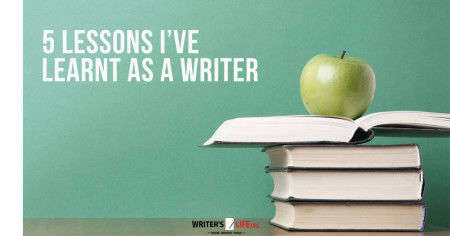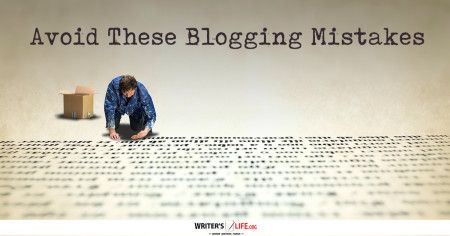- How To Tackle Jealousy In Creative Writing
- Common Submission Mistakes
- How To Stop Your Blog Becoming Boring
- The One Thing Every Successful Writer Has In Common
- How To Make Yourself Aware Of Publishing Scams
- Why Almost ALL Writers Make These Grammar Mistakes At Some Point
- 5 Tips For Authors On How To Deal With Rejection
- Top Mistakes to Avoid When Writing a Novel
- How to Avoid Common New Writer Mistakes
- 10 Mistakes New Fiction Writers Make
CREATING AN OUTLINE
Creating an Outline
by: Milton Trachtenburg
Writing, regardless of whether it is a story, a biography or a recipe, begins with an idea. The idea may come to you without bidding. Before turning the idea into the great American Novel of the Twenty-First Century, or whatever format you are writing, there are many steps you might choose to take before you begin writing the manuscript itself. I am going to focus this article on story writing but the concepts can apply to any writing.
The beginning of story writing doesn't appear on page one. As a matter‑of‑fact, it doesn't appear in the manuscript at all. The beginning of a story takes place in the mind of the writer, or perhaps in a notebook if you are very organized, which I admit I am not. I use Post-Its and when I am involved in a project, the walls of my office look like a giant bulletin board. Organizing means knowing what you are going to do with the major issues that confront a writer and make up the skeleton of any piece of writing.
I’ve read so many novels I've lost count. The best of them have nothing in common except that they use all of the principles I have listed below as part of the development of the work. The ones that fall the furthest below standards acceptable for publication all have several things in common: flat dialogue in which all the characters sound like each other and like the narrator. Narration that is boring and repetitive, using the weakest of verbs, strings of adjectives, excessive adverbs including in tags after dialogue ... he said, expressively.
Writing by new writers sometimes skip the critical steps I just mentioned and will describe at greater length below. Some of the writers show that they have all the tools needed to write exceptional prose but what I will discuss are issues no one knows from birth. It consists of tools that must be learned. The list below is not in a particular order. It is important to become familiar with the fact that there are many issues we must deal with before a word is committed to paper. We need to make the following decisions, amongst others:
* The nature of the protagonist. We needs to create a three‑dimensional character and set her loose in a plot. Our character must have many facets that, in combination, can make her unpredictable ‑‑ even to the writer. She needs to be unique in the same way each person you meet is unique. Characteristics are ot labels. They are developed over a lifetime and are always a blend of experience and birth characteristics. You can have two shy people and one ends up hosting a daytime TV show while the other develops agorophobia.
* The basic storyline. What is the story about? Here is an example of a storyline that gets the action going but has no input into how it will get to its destination. It differs from a plot outline in that a plot outline is a detailed account of what is going to happen and who is going to make it happen. Here is a sample beginning of a storyline:
A bank caper. Three men who met in reform school and the former girlfriend of one of them meet again twenty years later. Each has a reason for needing a large amount of money quickly or a reason for turning to an illegal activity to get it. Two meet by co‑incidence and involve the other two as they develop a plan to rob the former employer of one of the four.
As you develop the issues below, you begin to develop a plot outline, character descriptions and add to the storyline until it becomes a synopses that you can use to send to a publisher.
The beginning of the storyline brings us to the next set of important decisions in the process that takes us from an idea to a written manuscript:
* The individual major characters. What is the back story (history of the character that you may or may not share with the reader) about each one that you need in order to develop the story? What are their strengths and flaws? What in their background makes them susceptible to becoming a believable part of the scheme? What in their lives creates the potential for conflict and chaos when they join with the other protagonists? What in their lives makes them susceptible to making a mistake, changing their mind or taking a different path altogether?
* The narrator. Now that you have a storyline and the primary characters, you need to pick a narrator that best fits with the style and substance of the story. Will you use a First‑Person POV (Point-of-View) and choose one of the characters? Would this story be written best from a Third‑Person limited POV or a Third‑Person omniscient POV? Perhaps you are overlooking a minor character who hasn't been introduced yet who would give you the best POV. What kind of voice do you want to give the narrator? Does the narrator have to have the same kind of background as the characters? Decisions, decisions.
* Plot outlining. Each decision you make creates a need to make further decisions. Do you make a plot outline with a conclusion now, or do you allow the characters to develop the story so that the conclusion will become a natural outcome of their interactions with each other, with others who are introduced as the story develops, their strengths and weaknesses and outside elements they can't control?
* Back story. How much of the information about the characters do you need to share with the reader? How do you share it in a manner that doesn't impede the forward motion of the story?
* The major problem or obstacle to the success of the protagonist. How do you introduce the protagonist's major problem/s without being too obvious about it? How do you pull the reader into the conflict without appearing to force the issue?
* The hook. How do you get the reader to want to read on to the end? The first hook is a key that you want to develop that represents your style, the nature of the manuscript and will help the reader suspend disbelief. If you do not present some kind of a hook before you have finished page one, you are in danger of losing the reader. A hook can be as simple as sneaking in a question for which the reader must have the answer and will read a considerable distance into the work to find it. Later hooks keep the action flowing as characters are forced to make choices. In my most recently published book, a psychological mystery, my first hook was a four-word opener that created a question and a shock. It was, "Sometimes I hear voices." That forces the reader to read on because it is the kind of statement that raises questions.
* The introduction of the characters. How do you plan to bring your cast on to the stage? You want to be realistic, yet not waste too much time with introductions? How do you plan to build the characters so that they change as events and other characters impact upon them and they impact upon events and other characters? How do you make their inclusion seem realistic and not just hammered 9n as an afterthought?
* Developing each character's voice: Developing dialogue styles between the characters. Does your writing immediately distinguish your characters’ voices from each other and from the narrator? Does their dialogue contribute mightily to the progress of the storyline? Is there tension and conflict in the dialogue to move the story forward?
* Character’s thoughts. Do you use inner thoughts as part of the development of the protagonist and perhaps one or two additional characters? What do you reveal in inner thoughts that makes it worthwhile to use instead of dialogue and description?
* Description. Does your description of the characters list all their attributes and characteristics like the slats of a picket fence or do you allow your character to grow in the mind of the reader? Does your description of events and locale overwhelm the reader with adjectives and minutia? Do you show your story rather than tell it? All of these issues make the difference between a flat, dull waste of time and a live, exciting manuscript.
* Setting. Where have you placed the action? Does your story need a particular locale? If it does, do you know enough about the locale to describe it and use it accurately? The example I always recall regarding the description of locale bears repeating. The writer not knowing his facts killed the veracity of a mystery I once read. A particular scene took place on Fourteenth Street in Philadelphia. There is no Fourteenth Street in Philadelphia. Between Thirteenth Street and Fifteenth Street is Broad Street. Without that knowledge, a careless writer and editor allowed that faux pas to pass muster and be printed. One error in 400 pages of writing ruined an otherwise competent story for any reader who ever lived in Philadelphia or vicinity. After all, you think, how many other mistakes of carelessness did the writer include that I didn’t catch?
* The time frame and date. Another task is to set the time-frame you will use to conduct the business of the story: Hours? Days? Years? Also, you need to set the era in which it takes place: Now? Some identifiable time in the past? Some identifiable time in the future? Is time relevant to the story? If you are writing the biography of God, time is not an element except in describing some of His accomplishments. In other stories such as the classic mystery novel, DOA (dead on arrival), the protagonist has 24 hours until he dies of poison to catch the person who killed him.
* The format. Are you writing a book‑length project, a short story, a short‑short, a novelette? How you approach the material will vary according to what format you are writing in. How many characters you introduce, who will narrate, the time span, the focus will depend on what kind of writing you are doing. You wouldn’t present a short story with twenty-eight characters. You would spend too much time trying to introduce them and nothing else would be accomplished. You wouldn’t try to write a complete novel with only two characters unless your name was Daniel Defoe and your character was marooned on an island with a manservant. I still believe that Robinson Crusoe would still be selling if Defoe had marooned him with a chambermaid, but that is a story of a different texture.
* A working title. Sometimes a title can serve to develop the parameters around which you will build the story. It may not be the one the marketing department of a publisher will use, but it allows you to get the story in focus and to the editor.
* The opening line. If it is: "It was a dark and stormy night," your name better be Snoopy or you can forget it. It may be raining, cold and windy, but you better find a unique way to bring it into your story. You can develop the same concept in from a personalized place. A note about introducing the weather at all: Unless the weather is germane to the story, the less said the better. In late Nineteenth Century writing, almost every novel would begin with a ten-page introduction to the season, the weather, the kinds of trees and the rest of the setting. In today’s world, people have television, movies and access to the internet and know what a mansion on lovely grounds looks like. The readers know the effects of a thunderstorm. If rain or sleet, heat or cold, city mouse or country mouse are elements of the story, introduce it ... in brief and in a memorable manner.
I arrived at our rendezvous wet, cold and angry. My first thought: Throw in the towel . . . but not until I use it to dry myself off.
Ok, that was pretty loose, but you get the idea. Be original; no clichés --- not even in your outline. If you write your best in an outline, imagine what the manuscript will look like! A cliché is like an old friend. You call him with the news that you are getting married, but you don’t take him on the honeymoon.
I intentionally left more questions unanswered than answered in writing this piece. Learning to write is not learning answers. It is learning to formulate better questions. Outlining doesn't write your story but it provides the parameters around which your writing can focus. It can continue to poke you with reminders of what you intend to do and how to stay on track to do it.




















3 Comments